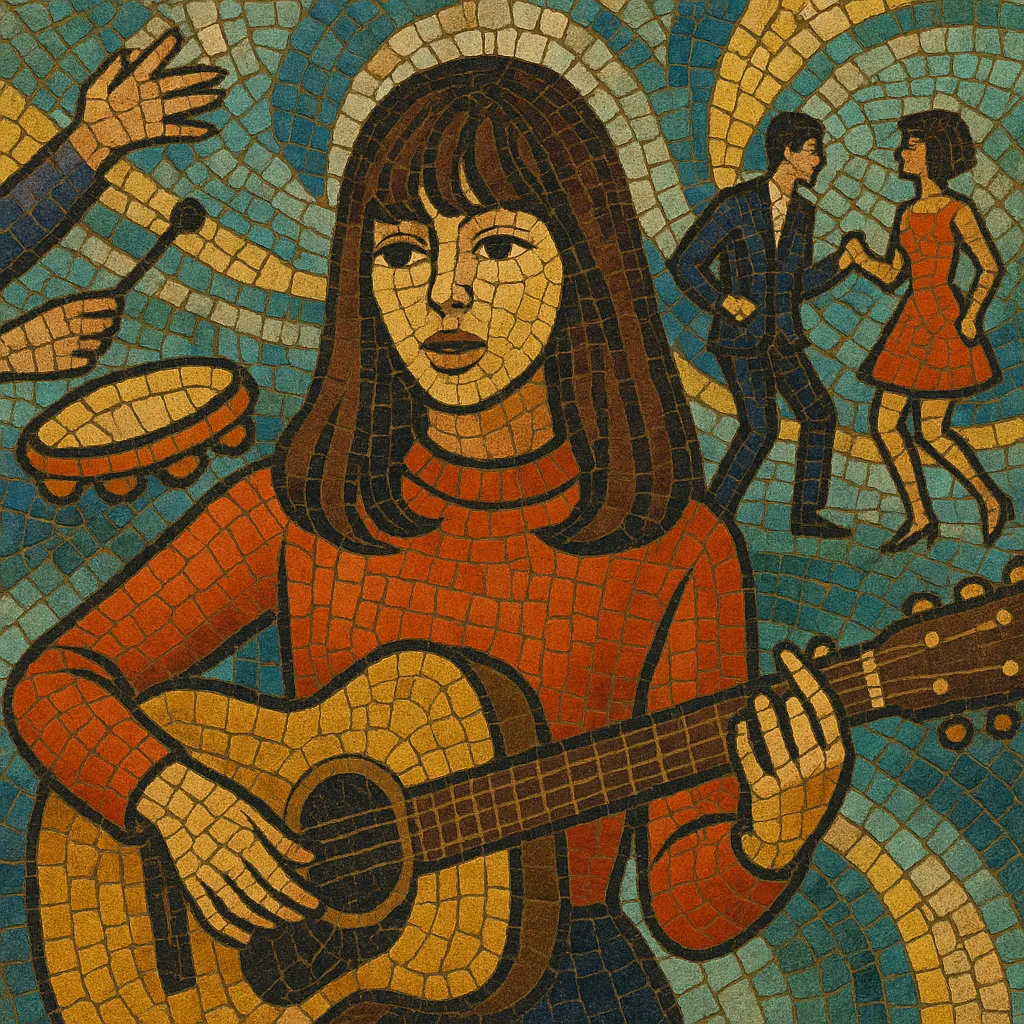Yé-yé is a Francophone teen-pop movement of the early-to-mid 1960s that fused the brisk rhythms and guitar-driven verve of Anglo-American rock & roll and beat music with the melodic charm and lyrical sensibilities of French chanson.
Characterized by bright melodies, succinct verse–chorus forms, handclaps and tambourines, and breathy, close-miked vocals, yé-yé celebrated youth culture, fashion, and flirtatious romance. Arrangements often blended twangy guitars and Farfisa/Vox organs with string or brass sweetening, while playful onomatopoeia and nonsense syllables (the titular “yé-yé”) emphasized its carefree, danceable spirit.
The style flourished through radio and television, particularly around the Salut les copains scene, and produced enduring hits that remain touchstones of European pop history.
Yé-yé emerged in France as postwar teenagers embraced imported American and British sounds. Early rock & roll and doo-wop recordings, alongside British beat bands, catalyzed a youth-oriented pop wave. French chanson provided the language, wit, and melodic polish, while media hubs (notably the Europe 1 radio show and magazine Salut les copains) created a star-making ecosystem.
By the early 1960s, a vibrant roster of young singers—many women—defined the genre’s image: stylish, modern, and slightly mischievous. Producers paired clean electric guitars and organs with string sections and catchy hooks, delivering concise singles suited to radio and televised variety shows. Serge Gainsbourg’s “Poupée de cire, poupée de son,” performed by France Gall, winning Eurovision in 1965, symbolized the movement’s confidence and exportability.
While rooted in France, yé-yé resonated across Europe and into Quebec, Spain, and Italy, inspiring localized variants. Its fashion-forward iconography—miniskirts, bold graphics, and pop-modern aesthetics—made the music inseparable from contemporary visual culture.
As psychedelic rock, progressive pop, and chanson’s more introspective currents rose, yé-yé’s initial wave ebbed. Yet its DNA—sweet-tart melodies, nimble arrangements, and a playful approach to pop—echoed through French pop’s later generations and influenced Japanese Shibuya-kei and strands of indie pop. Today, its singles remain staples of retro sets, and its sound and style inform countless revivals and references.


